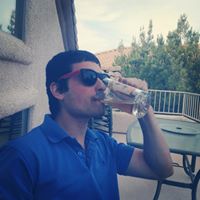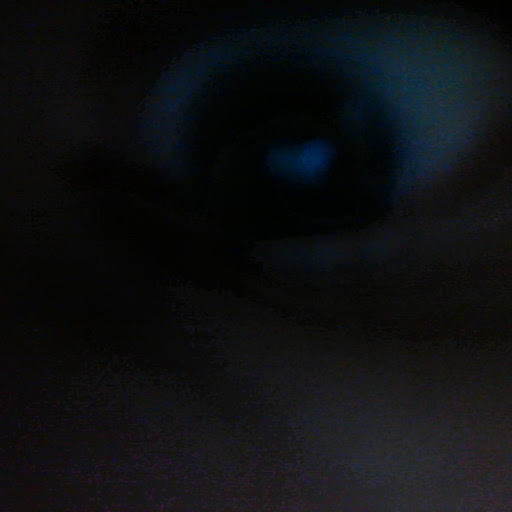Steven Lee Wolff
age ~70
from Leawood, KS
- Also known as:
-
- Steven L Wolff
- Steve L Wolff
- Steven L Wolf
- Sl Wolff
Steven Wolff Phones & Addresses
- Leawood, KS
- Olathe, KS
- 26560 W 207Th St, Spring Hill, KS 66083 • (913)8566545
- Tampa, FL
- 11931 New Country Ln, Columbia, MD 21044 • (410)8841216
- Junction City, KS
- Largo, FL
- Cedar Rapids, IA
Work
-
Company:Disys for verizon - Tampa, FLNov 2011
-
Position:Call call center analyst consultant
Education
-
School / High School:Pass Christian University- On Line2004
-
Specialities:BS in Computer Science
Skills
Application Intagration/Support Field En...
Ranks
-
Licence:Virginia - Authorized to practice law
-
Date:1988
Specialities
Real Estate Law • Partnership Law • Real Property Law
Lawyers & Attorneys

Steven Charles Wolff - Lawyer
view sourceLicenses:
Virginia - Authorized to practice law 1988

Steven Wolff - Lawyer
view sourceOffice:
Rosenfeld Wolff and Klein
Specialties:
Real Estate Law
Partnership Law
Real Property Law
Partnership Law
Real Property Law
ISLN:
902654073
Admitted:
1981
University:
University of California at Los Angeles, B.A., 1978
Law School:
Boalt Hall School of Law, University of California, J.D., 1981
License Records
Steven W. Wolff
License #:
16468 - Expired
Issued Date:
Jan 24, 1996
Renew Date:
Jun 1, 2006
Expiration Date:
May 31, 2008
Type:
Certified Public Accountant
Steven Wolff
License #:
33711 - Expired
Category:
Dual Towing Operator(IM)/VSF Employee
Expiration Date:
Feb 10, 2016
Steven Noel Wolff
License #:
10403 - Expired
Category:
Pharmacy
Issued Date:
Jul 27, 1990
Effective Date:
Jan 2, 1996
Type:
Pharmacist
Medicine Doctors

Steven M. Wolff
view sourceSpecialties:
Urology
Work:
Health First Medical Group Urology
1026 Pathfinder Way, Rockledge, FL 32955
(321)6312070 (phone), (321)6316489 (fax)
Health First Medical Group Urology
701 W Cocoa Bch Cswy STE 602, Cocoa Beach, FL 32931
(321)6312070 (phone), (321)6316489 (fax)
1026 Pathfinder Way, Rockledge, FL 32955
(321)6312070 (phone), (321)6316489 (fax)
Health First Medical Group Urology
701 W Cocoa Bch Cswy STE 602, Cocoa Beach, FL 32931
(321)6312070 (phone), (321)6316489 (fax)
Education:
Medical School
Creighton University School of Medicine
Graduated: 1990
Creighton University School of Medicine
Graduated: 1990
Procedures:
Circumcision
Cystourethroscopy
Transurethral Resection of Prostate
Cystoscopy
Kidney Stone Lithotripsy
Prostate Biopsy
Cystourethroscopy
Transurethral Resection of Prostate
Cystoscopy
Kidney Stone Lithotripsy
Prostate Biopsy
Conditions:
Benign Prostatic Hypertrophy
Bladder Cancer
Calculus of the Urinary System
Erectile Dysfunction (ED)
Prostate Cancer
Bladder Cancer
Calculus of the Urinary System
Erectile Dysfunction (ED)
Prostate Cancer
Languages:
English
Spanish
Spanish
Description:
Dr. Wolff graduated from the Creighton University School of Medicine in 1990. He works in Cocoa Beach, FL and 1 other location and specializes in Urology. Dr. Wolff is affiliated with Cape Canaveral Hospital and Viera Hospital.

Steven N Wolff
view sourceSpecialties:
Internal Medicine
Medical Oncology
Hematology & Oncology
Public Health & General Preventive Medicine
Medical Oncology
Hematology & Oncology
Public Health & General Preventive Medicine
Education:
University of Illinois at Chicago (1974)

Steven Dana Wolff
view sourceSpecialties:
Radiology
Diagnostic Radiology
Diagnostic Roentgenology
Endocrinology, Diabetes & Metabolism
Diagnostic Radiology
Diagnostic Roentgenology
Endocrinology, Diabetes & Metabolism
Education:
Duke University(1989)

Steven Dana Wolff
view sourceSpecialties:
Diagnostic Radiology
Endocrinology, Diabetes & Metabolism
Endocrinology, Diabetes & Metabolism
Education:
Duke University(1989)
Name / Title
Company / Classification
Phones & Addresses
WOLFFTECH LLC
MCC GROUP LLC
GEWOCO LLC
Vice President
Wolfgang Knowledge Management, Inc
13815 Ml Cv Cir, Tampa, FL 33618
Isbn (Books And Publications)

Resumes

Steven Wolff
view source
Steven Wolff
view source
Steven Wolff
view source
Steven Wolff
view source
Steven Wolff Plano, TX
view sourceWork:
Disys for Verizon
Tampa, FL
Nov 2011 to Dec 2013
CaLL Call Center Analyst Consultant Autonomy
Dallas, TX
Jun 2006 to Jun 2011
Field Service Engineer Intervoice Inc
Dallas, TX
Apr 1998 to Mar 2005
Senior Field Engineer
Tampa, FL
Nov 2011 to Dec 2013
CaLL Call Center Analyst Consultant Autonomy
Dallas, TX
Jun 2006 to Jun 2011
Field Service Engineer Intervoice Inc
Dallas, TX
Apr 1998 to Mar 2005
Senior Field Engineer
Education:
Pass Christian University
On Line
2004 to 2006
BS in Computer Science Richland College
Richardson, TX
Associates in Electro-Mechanical Technology
On Line
2004 to 2006
BS in Computer Science Richland College
Richardson, TX
Associates in Electro-Mechanical Technology
Skills:
Application Intagration/Support Field Engineer
Us Patents
-
Local Magnetization Spoiling Using A Gradient Insert For Reducing The Field Of View In Magnetic Resonance Imaging
view source -
US Patent:6384601, May 7, 2002
-
Filed:Oct 19, 1999
-
Appl. No.:09/403530
-
Inventors:David G. Wiesler - Bethesda MD
Han Wen - Rockville MD
Robert S. Balaban - Bethesda MD
Steven D. Wolff - New York NY -
Assignee:The United States of America as represented by the Secretary of Department of Health Human Services - Washington DC
-
International Classification:G01V 300
-
US Classification:324309, 324312, 324322
-
Abstract:A method, and related apparatus, for suppressing the magnetic resonance signal to an experimentally adjustable depth by applying a spatially inhomogeneous field between the slice-select pulse and the data acquisition. Eliminating the signal from near surface regions allows one to shrink the field of view of an image without introducing aliasing artifacts, thereby improving the images resolution or decreasing imaging time. Experimental tests on a phantom and a human subject indicate that the depth of signal suppression may be continuously varied to depths of over 80 millimeters with modest requirements on power supplies, pulse sequences, and materials.
-
Acquisition Of Segmented Mri Cardiac Data Using An Epi Pulse Sequence
view source -
US Patent:61442003, Nov 7, 2000
-
Filed:Feb 20, 1998
-
Appl. No.:9/027519
-
Inventors:Frederick H. Epstein - Gaithersburg MD
Steven D. Wolff - New York NY -
Assignee:General Electric Company - Milwaukee WI
-
International Classification:G01V 300
-
US Classification:324306
-
Abstract:A method is disclosed to reconstruct multiphase MR images that accurately depict the entire cardiac cycle. A segmented, echo-planar imaging (EPI) pulse sequence is used to acquire data continuously during each cardiac cycle. Images are retrospectively reconstructed by selecting views from each heartbeat based on cardiac phase.
-
Retrospective Ordering Of Segmented Mri Cardiac Data Using Cardiac Phase
view source -
US Patent:5997883, Dec 7, 1999
-
Filed:Jul 1, 1997
-
Appl. No.:8/886487
-
Inventors:Frederick H. Epstein - Gaithersburg MD
Andrew E. Arai - Kensington MD
Jeffrey A. Feinstein - Alexandria VA
Thomas K. Foo - Rockville MD
Steven D. Wolff - Bethesda MD -
Assignee:General Electric Company - Milwaukee WI
-
International Classification:G01V 300
-
US Classification:424306
-
Abstract:A method is disclosed to reconstruct multiphase MR images that accurately depict the entire cardiac cycle. A segmented, gradient-recalled-echo sequence is modified to acquire data continuously. Images are retrospectively reconstructed by selecting views from each heartbeat based on cardiac phase rather than the time elapsed from the QRS complex. Cardiac phase is calculated using a model that compensates for beat-to-beat heart rate changes.
-
Magnetization Transfer Contrast And Proton Relaxation And Use Thereof In Magnetic Resonance Imaging
view source -
US Patent:50506099, Sep 24, 1991
-
Filed:Apr 14, 1989
-
Appl. No.:7/337980
-
Inventors:Robert S. Balaban - Bethesda MD
Steven D. Wolff - Durham NC -
Assignee:The United States of America as represented by the Department of Health
and Human Services - Washington DC -
International Classification:A61B 505
-
US Classification:128653CA
-
Abstract:A nuclear magnetic resonance method is provided for monitoring and imaging the exchange of magnetization between protons in free water and protons in a relatively immobilized pool of protons in a sample. The method provides a new form of contrast for nuclear magnetic resonance imaging of samples such as biological tissues, polymers, and geological samples.
-
Method And System For Mri Venography Including Arterial And Venous Discrimination
view source -
US Patent:61922641, Feb 20, 2001
-
Filed:Dec 28, 1998
-
Appl. No.:9/221500
-
Inventors:Thomas K. F. Foo - Rockville MD
Vincent B. Ho - North Bethesda MD
Steven D. Wolff - New York NY -
Assignee:General Electric Company - Milwaukee WI
Uniformed Services University of Health Sciences - Bethesda MD -
International Classification:A61B 5055
-
US Classification:600413
-
Abstract:A system and method for arterial and venous discrimination in MR venography is disclosed. By setting a noise level in the phase image (that is proportional to the velocity encoding value) at a threshold level between that of the arterial signals and the venous signals during the diastole portion of the cardiac cycle and acquiring a phase contrast MR image during the diastole portion, the arterial signals are effectively suppressed and a venous only image can be reconstructed. Post-processing steps are disclosed which can alternatively provide an arterial only image. By separately reconstructing a magnitude image and a phase image map to produce a magnitude image and a phase image, a masking module can create an output displaying venous only or arterial only images based on a user selection. The present invention allows for a complete noninvasive angiography exam to be completed within approximately 30 minutes.
-
Method For Extracting Deformations From Velocity-Encoded Magnetic Resonance Images Of The Heart
view source -
US Patent:60313749, Feb 29, 2000
-
Filed:Sep 25, 1997
-
Appl. No.:8/937725
-
Inventors:Frederick H. Epstein - Gaithersburg MD
Andrew E. Arai - Kensington MD
Carl C. Gaither - Laurel MD
Steven D. Wolff - Bethesda MD -
International Classification:G01V 300
-
US Classification:324306
-
Abstract:An MRI scan is conducted in which velocity encoded NMR data is acquired for a slice through the heart. Velocity images and magnitude images are reconstructed at multiple cardiac phases and masks are formed using the magnitude images. The masks are applied to the velocity images to isolate the left ventricle, and rigid body motion is calculated and subtracted from the masked velocity images to indicate deformation of the left ventricle.
Plaxo

Steven Wolff
view sourcePrincipal at AMS Planning & Research
Myspace
Flickr
News

Jonathan Storm: And playing the part of Phila. …
view source- "The crew that's here locally are an amazing group," said Los Angeles-based production designer Steven Wolff. And because Rhode Island is so small, the production crossed state lines. "There's a huge film presence in Boston that migrates through New England," said Wolff. "We have the crme de la cr
- Date: Mar 29, 2011
- Category: Entertainment
- Source: Google

Steven Howard Wolff
view source
Steven Wolff
view source
Steven Wolff
view source
Steven Wolff
view source
Steven Wolff
view source
Steven J. Wolff
view source
Steven Wolff
view source
Steven Wolff
view sourceClassmates

Steven Wolff
view sourceSchools:
Avenel Middle School Avenel NJ 2000-2001
Community:
Bruce Butler, Beth Miller, Robert Gardner, Gloria Cotta

Steven Wolff
view sourceSchools:
Huguenot Academy Powhatan VA 1971-1972
Community:
Dana Tucker, Paul Mitchell, Stephen Payne, Pat Orange, Elizabeth Baker

Steven Wolff
view sourceSchools:
Ashburn Lutheran School Chicago IL 1977-1990
Community:
Carol Leganski, Marlon Hall, Erik Novack

Steven Wolff
view sourceSchools:
Mamaroneck High School Mamaroneck NY 1971-1975
Community:
George Grant

Steven Wolff
view sourceSchools:
General Douglas Mcarthur High School Levittown NY 1973-1977

Steven Wolff, Freedom Are...
view source
Steven Wolff, Colonia Hig...
view source
Ashburn Lutheran School, ...
view sourceGraduates:
Steven Wolff (1977-1990),
Richard Dominiak (1980-1981),
Tracy Janus (1976-1984)
Richard Dominiak (1980-1981),
Tracy Janus (1976-1984)
Googleplus

Steven Wolff

Steven Wolff

Steven Wolff

Steven Wolff

Steven Wolff
Work:
LaGrande UMC - Pastor (6)
Education:
Oregon State University - Zoology and Botany, Emory University - Divintiy

Steven Wolff
Work:
Snickers Gap Tree Farm - Manager

Steven Wolff

Steven Wolff
Youtube
Get Report for Steven Lee Wolff from Leawood, KS, age ~70




















